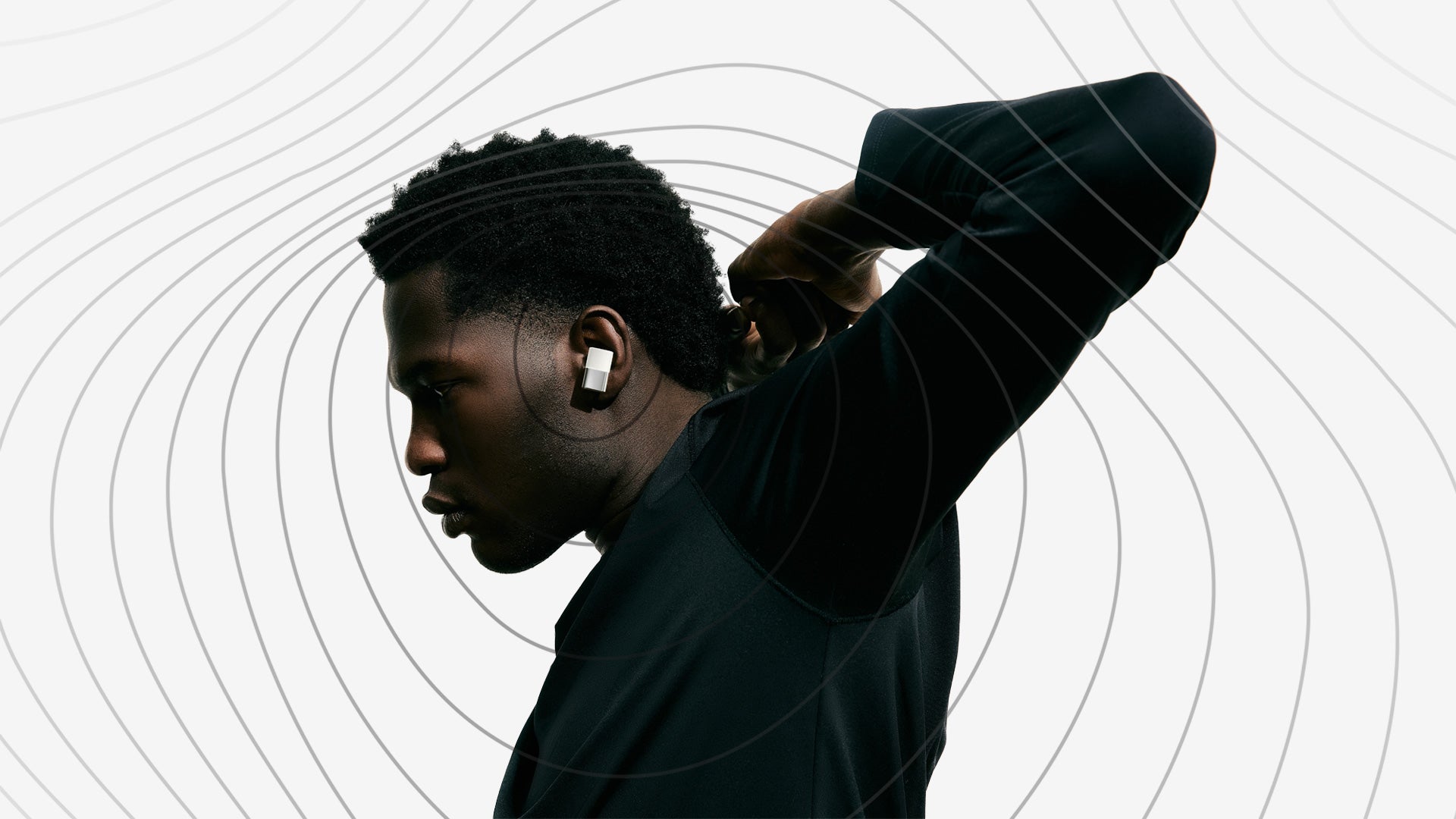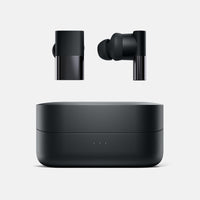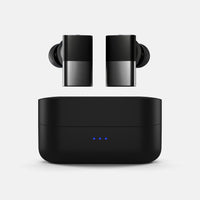
What is ANC and How Does it Work? Active Noise Cancellation Explained
ANC, or Active Noise Cancellation, has saved us from having to endure the monotonous roar of jet engines or the dull conversations of other passengers on our commutes. In the era of wireless audio, it’s an ubiquitous technology that we perhaps take for granted. So let’s pay it some gratitude by answering the question: how does ANC actually work? To adequately answer that, there are a few broad concepts that we should go over first.
Passive vs. Active Noise Cancellation
There are two types of noise cancellation: passive, and active.
Passive cancellation is fairly intuitive, and is present in every headphone or earbud that you have ever worn. Let’s use the Status Audio CB-1 headphone as an example: the moment it’s over your ears, even before you press play, your surrounding environment becomes quieter and muffled. The physical properties of the headphone, such as the materials that compose the ear pads and cans, obstruct sound waves and prevent them from reaching your ears at their usual levels. The walls of your apartment serve to passively isolate the sounds of your neighbors who are always fighting, and so on.
If passive cancellation is based on physically buffering sound waves before they reach your ears, then what is active noise cancellation? ANC necessitates a technological intervention to manipulate a wave in a way that plays on its physical properties. So, sorry; still a little more to go over before we have a clear answer to how exactly how ANC works.
The (Basic) Anatomy of a Sound Wave
Picture a sound wave - a squiggly line. For now, that will suffice. But what is actually occurring in that squiggle?

Well, a lot, but the two things we’ll concern ourselves with for the time being are compression and rarefaction. Compression pushes air particles together, and rarefaction pulls them apart. When this pushing and pulling of air particles happens repetitively, it results in producing a distinct tone that we perceive as a sound. Simple enough, right? Keep this in mind, I’ll come back around to it shortly.
Summing vs. Phase Cancellation
Pick a wave, any wave. Let’s keep it simple, and say it’s amplified to 10 decibels. Now take a perfect duplicate of that same wave, also amplified to 10 decibels, and play it simultaneously.

The waves will combine, and produce a 20dB wave (10 dB + 10 dB). This is what we call summing.
For our purposes, phase cancellation can be thought of as the opposite of summing. Let’s take that 10 decibel sound wave in the last paragraph, and try to get it to 0 dB - or what a normal person would simply call silence. We can’t add a wave with a negative amplitude, as that doesn’t exist; so how do we get there?
Believe it or not, we need that second identical sound wave again - but there’s a twist. We’re going to flip the phase of the second wave this time before we add it to the first wave. It’s nearly identical to the first wave, but with one key caveat: when the first wave compresses air, the second wave is rarefacting air symmetrically and simultaneously - and vice verse. These perfectly equal and opposite actions that the two waves perform result in a net zero movement of air particles. This physical phenomenon is known as phase cancellation.

Phase cancellation gets at the physics behind active noise cancellation, but how is it technologically implemented?
The Noise Cancelling Technology in Wireless Buds and Headphones
Let’s use the Status Audio Between 3ANC as an example. The buds have 6 microphones that are dedicated to carrying out ANC functions - these are called beamforming microphones. They serve to rapidly “listen” to the noise around you, and “hear it” the way your ears would. These microphones then send what they hear to a DSP (Digital Sound Processing) chip that is installed inside the earbuds.

As rapidly as the beamforming microphones can send their signals, the DSP chip flips the phase of said signals and plays the resulting, phase-flipped signal through the earbuds. This results in the phase cancellation of surrounding environmental noise - better known as active noise cancellation.
Active Noise Cancellation’s Relationship With Frequency
We just went over how specialized microphones and chips in the Between 3ANC perform active noise cancellation by scanning the sounds in your environment before phase cancelling them into oblivion. But as I type this, the ANC mode on the Between 3ANC has reduced the deep roar of the central air unit next to me to a virtual silence, yet I can still faintly hear the high pitched tapping of my fingers hitting the keyboard. Why is that?
Ongoing, droning sounds that are lower in pitch are more effectively cancelled out by ANC than higher pitched environmental noises. To explain why this is, there’s just one more bit of sound wave anatomy that we need to introduce: frequency.
You likely know the basics going into this - lower frequencies produce low pitches, while higher frequencies produce higher pitches, blah blah. But let’s think more literally: frequency is referring to how frequently a sound wave is oscillating between compressing and rarefacting air particles.

A wave at 20 Hz, which is the lowest audible pitch, is compressing and rarefacting air 20 times per second. A wave at a 20,000 Hz frequency, ostensibly, compresses and rarefacts air 20,000 times per second - that is, 1,000 times the speed of the 20 Hz frequency wave.
Which one do you think the DSP chip, the part responsible for producing a phase flipped signal, has more time to react to?
If you guessed the 20 Hz wave, you’re correct. The slower oscillation of lower frequencies gives the DSP chip time to process and respond with a phase flipped signal. Higher frequencies oscillate at speeds that DSP chips can’t keep up with - yet - and thus manage to squeak by the DSP before it has time to process their signal and flip their phase.
TLDR; Just Spit it Out Already
Okay fine, have it your way:
- Active Noise Cancellation (ANC) uses microphones and a special processing chip to flip the phase of incoming environmental noises.
- The phase flipped signal combines with the sound waves of the naturally occurring environmental noise, which cancel one another out via phase cancellation.
- ANC works better on lower frequencies than higher frequencies as the slower oscillations of lower frequencies give a DSP chip enough time to perform its processing.
Hope that was helpful. Enjoy the silence.




